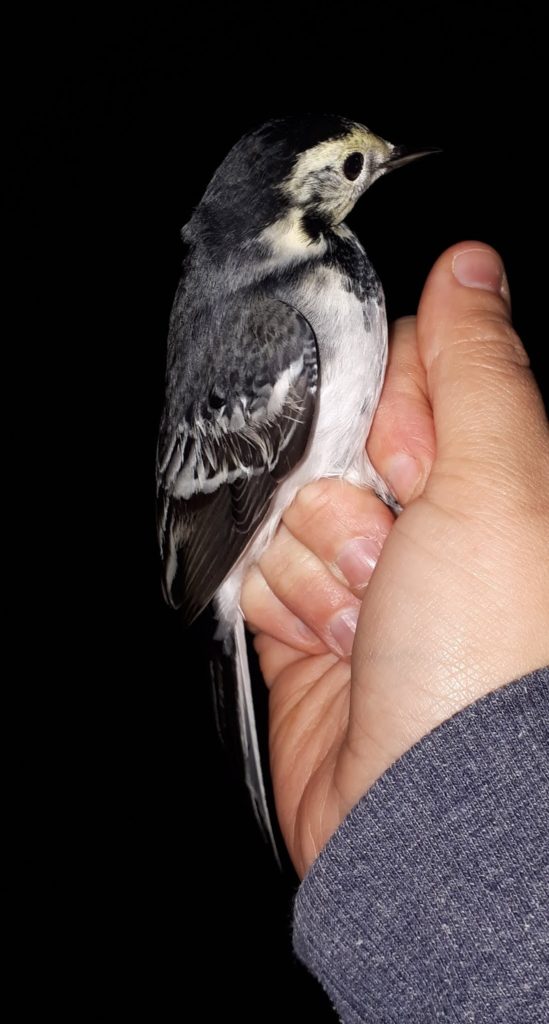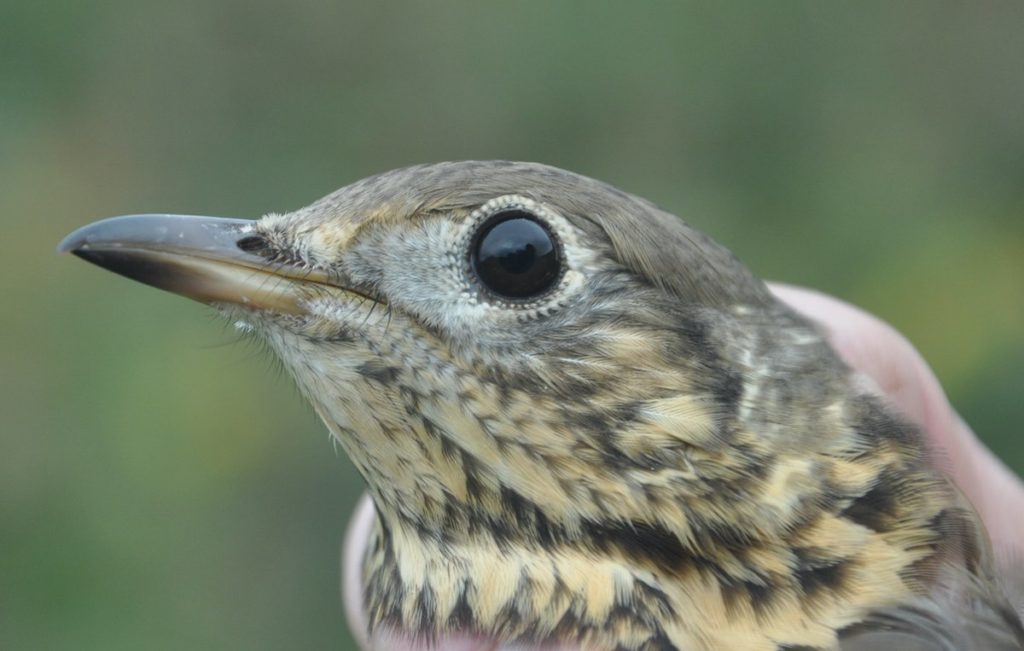A period of unsettled weather in the first half of October culminated in Storm Callum, which raised water levels considerably on the marsh. Given the coastal location of the site, it proved very difficult to get sessions in. We were restricted to a weekday visit, an evening roost session (aimed at wagtails) and one weekend session, which was wind affected.
The combined breakdown from these visits was as follows:
|
Species Name
|
Ringed
|
Recaptured
|
Total
|
|
Blackcap
|
9
|
|
9
|
|
Blue Tit
|
29
|
2
|
31
|
|
Cetti’s Warbler
|
1
|
1
|
2
|
|
Chaffinch
|
1
|
|
1
|
|
Chiffchaff
|
34
|
1
|
35
|
|
Dunnock
|
3
|
7
|
10
|
|
Goldcrest
|
6
|
|
6
|
|
Goldfinch
|
3
|
1
|
4
|
|
Great Tit
|
3
|
2
|
5
|
|
Grey Wagtail
|
1
|
|
1
|
|
Long-tailed Tit
|
2
|
|
2
|
|
Meadow Pipit
|
2
|
|
2
|
|
Mistle Thrush
|
1
|
|
1
|
|
Pied/White Wagtail
|
22
|
|
22
|
|
Reed Bunting
|
14
|
3
|
17
|
|
Reed Warbler
|
|
1
|
1
|
|
Robin
|
2
|
2
|
4
|
|
Snipe
|
1
|
|
1
|
|
Wren
|
5
|
3
|
8
|
|
Grand Total
|
139
|
23
|
162
|
The main interest was as follows:
- An evening haul of 22 pied / white wagtail and a single grey wagtail. The former were captured close to the South Pond in an area in which we normally target snipe. There had been substantial movements over the previous week, and the number of birds in the area at dusk was considerable. We captured only a small proportion. All but one of the wagtails was a first winter bird. The pied / white wagtails showed considerable variation in the extent of their post juvenile moult, with some having moulted no greater coverts, and others retaining only 1-3. Some had also partially moulted their tertials. The grey wagtail was also a first winter bird; post juvenile moult of the wing feathers was restricted to the lesser and median coverts.
- A influx of reed buntings into the marsh. This is not atypical of October, and we would hope to capture more birds over the coming weeks. Over time we have become far more practised in ageing them specifically, something we can reassess regularly; we have ringed 540 reed buntings at Oxwich in the past few years, and approximately one third of birds we catch have already been ringed.
- A relatively late reed warbler (on 7 October). This was a young bird carrying some fat (score of 2 using the BWG system), but not enough to suggest it was in a condition to migrate. In 2017 we captured our last reed warbler on 24 September, while in 2016 our last was on 19 November. It is unclear whether any of these late birds manage to migrate to their wintering grounds; it would be nice to catch a returning individual.
- A mistle thrush. Only the second to be captured on the marsh, this was a young bird with a clear moult limit in the wing. There were flocks of mistle thrushes around on the morning of 7 October. They showed great interest in a tape, but only one bird stuck in the net (another escaped and one perched on the net pole). An additional new species for one of our trainees.
The next week should see redwings, hopefully firecrest, jack snipe and maybe a yellow-browed warbler. Settled weather would be much appreciated.
Thanks to all who have attended recent sessions: Heather Coats, Keith Vaughton, Cedwyn Davies, Wayne Morris, Val Wilson, Alex McCubbin, Richard Dann, Sophie de Grissac, Sarah Davies, Amy Schwartz, Martin Thomas and Kathryn Dunnett.
 |
| Grey wagtail (Alex McCubbin) |
 |
| Pied wagtail (Alex McCubbin) |
 |
| Mistle thrush (Richard Dann) |